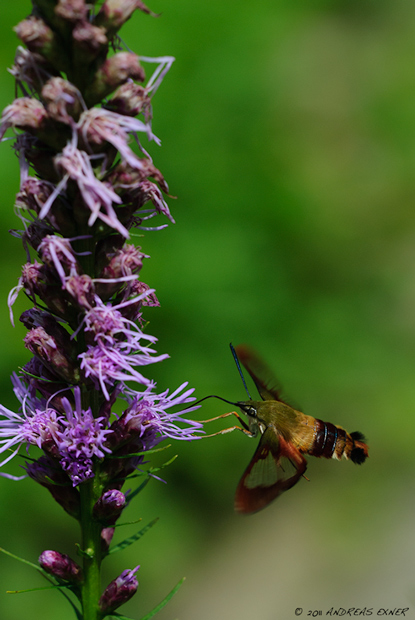
- Nikon D200, SIGMA 150mm/2.8, 1/750s, f/4, -0.5 EV, ISO 100, tripod
I just realized that this one is already the 50th post filed under "Nature clicks". It is a coincidence that today's image is larger than usual. I just thought that my subject deserves a little more than the 620 pixel I use normally for the long side of the pictures I post here.
Despite the heat I couldn't resist to visit the Green Island Wetlands again today. The water is very low and except for a family of Pied-billed Grebes and a couple Killdeer I did not see any birds. One of my favorite ponds was even drained and I wonder what happened to the Moorhens, Yellow-headed Blackbirds, and other species I had found there during the last few months.
I put the long lens away and mounted the SIGMA 150 mm, f/2.8 Macro DG HSM to my camera. This lens has never disappointed me. It is ideal for shooting insects. The 150 mm gives me the extra distance that is sometimes necessary in order not to scare away an animal. The lens produces tack sharp images and if a picture is not sharp I have only to blame myself for.
When I shoot butterflies or other fast moving insects in our yard I handhold the camera with the 150/2.8. There is no way that you can follow one of the swallowtails with their fast movement from flower to flower if the camera sits on a tripod. It is a different story when it comes to Dragon- or Damselflies. They perch quite often on a twig or leaf. Even if they fly around for a little while, Dragonflies return often to the same or a place nearby. All what it needs is a slow and careful approach and of course some patience. Having the camera on a tripod helps definitely in this matter. Manual focus works sometimes better, especially if the insect is almost translucent.
The Brown-spotted Yellow-wing here was my first encounter of this beautiful dragonfly. What you don't see is the sweat dropping from my forehead and running down my back while kneeling in the dust beside the gravel road… But I enjoy it!














